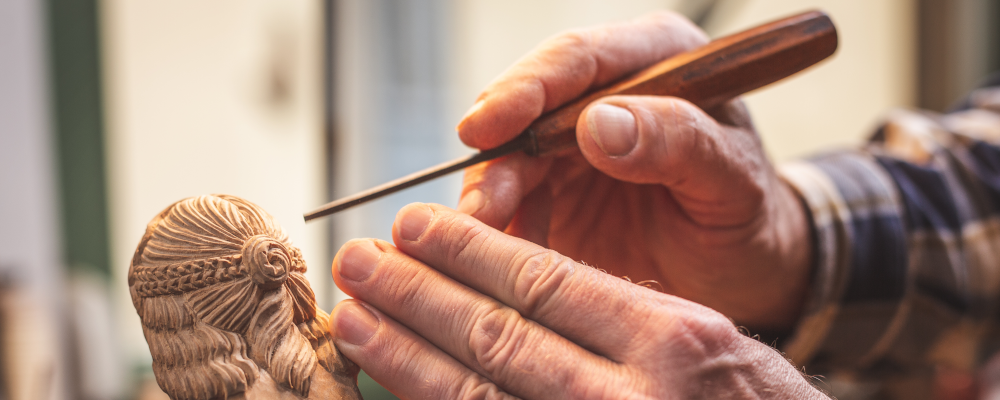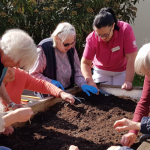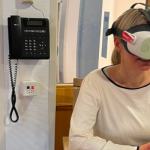Crafts are a man’s job – at least that is how it appears in the world view of many nursing home residents. They belong to the 1930/40 age group, are now over 80 years old, and often used to work in a skilled trade. ‘Or worked in the garden,’ says Christina Kuhn, managing director and scientific director of the Dementia Support Stuttgart.
Hammering, drilling, sawing…
…mowing the lawn or mending a tyre are activities they know from their own experience. But seniors in nursing homes rarely encounter this reality of life. One reason for this is that the proportion of men in care homes was low for a long time. ‘Just 15 years ago, 85 % of residents were women,’ says Kuhn. Social care was therefore primarily geared towards the daily routine of today’s 85-year-olds. As a result, the services offered range from baking together to handicrafts and help with household chores. After all, ironing, knitting and cooking used to be mainly women’s work.
However, as a result of demographic change, the proportion of men among the residents of care homes is increasing. It is estimated that one in three residents today is a man. As a result, the range of activities in the skilled trades for the ‘old gentlemen’ in the house is slowly growing, Kuhn observes. The expert recommends low-threshold offers. This way, residents can accompany the in-house technician and lend a hand. ‘Those who hand over a wrench go from being an observer to being an actor,’ says Kuhn about this form of activation, which carries the message ‘I am useful’.
Crafts as a familiar activity
The Demenz Support Stuttgart has published a brochure on this topic: Practical Help for Men, as aptly titled. The authors recommend taking a look at the residents‘ biographies to determine what activities would be suitable for them. For example, a set box for men with dementia can become a sorting box in which they sort screwdrivers, nuts and washers by size. But helping to oil doors, sweep the courtyard or push the drinks trolley can also appeal to men because they remember doing these things when they were younger. Handling metal, wood or wire is more familiar than kneading biscuit dough or sorting knitting wool.
Kuhn recommends checking with local networks to see if and which associations, kindergartens or other social institutions can be involved in the care programme. In particular, cooperation with (forest) kindergartens and after-school care centres is a good idea, for example to build an insect hotel together. ‘The point is to make something without the pressure of production,’ says the scientific director from Stuttgart.
Activating the research instinct
If making things by hand seems too much effort – a social care professional is usually responsible for 15 people and a slow production process needs to be planned and organised – you can also tap into your sense of discovery. Sometimes it is enough to take an old portable radio apart and look at its inner workings. If the man’s biography includes occupations such as electrician, electronics engineer or telecommunications technician, this is a good idea. The dementia brochure also mentions building and operating a model railway as a suitable form of stimulation for men.
But if it has to be a crafts project, Kuhn advises approaching relatives to make something together with their husbands, fathers, grandfathers or brothers: ideas that are easy to implement with a little help include making a kite for the autumn or wooden racquets for fans of the local handball club. If you are planning a seasonal activation, you can organise a fruit press from the fruit-growing association in an apple-growing area. And let the men in the house operate it. And if one of them was a typical boss in his professional life, he can sit at the table and be included on a linguistic level: ‘Mr. Meier, what do you think, are we doing this right?’
Art instead of crafts
But it is also true that not every man has worked as a bricklayer, carpenter or car mechanic. There are also ‘artists’ among the residents, such as set designers, musicians or men’s tailors. ‘A spanner is less appropriate here,’ says Kuhn. Instead, these residents might prefer to work with different fabrics and yarns or are keen to help build a jew’s harp or tabletop harp.


